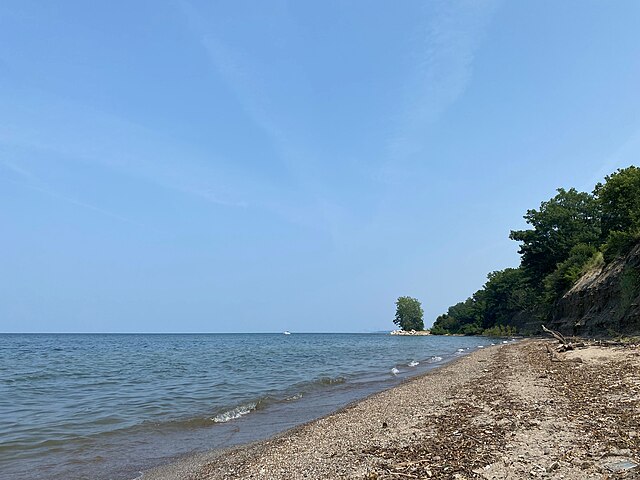Lake Erie, one of the five Great lakes of North America, holds a significant place in the history of the region. It is the fourth largest among the Great Lakes only by surface area. Named after the Erie tribe of native Americans who lived a long the Southern shore. Lake Erie has been a vital resource for transportation, trade, and sustenance. The first European to document the lake was an Explorer from France in 1669, and goes by the name of Louis Jolliet.
During the 18th and 19th centuries, Lake Erie was able to play a big part in the expansion from the United States to Canada. The lake was a major battle ground during the War of 1812. More importantly the Battle of Lake Erie which occurred in 1813, American forces led by Oliver Perry defeated the British fleet. This win secured control over Lake Erie and was detrimental to the war effort. The lake became a major transportation route with the building of the Erie Canal in 1825. The Canal connected the Great Lakes to the Atlantic Ocean.
The Industrial Revolution had changed the Lake Erie region. Cities such as Cleveland or Buffalo grew as manufacturing and shipping hubs. The industrial boom led to severe environmental degradation. By the 20th century , the pollution from factories had severely impacted the water quality of the Lake. This lead to many problems such as algae blooms and fish kills. The Cuyahoga river, which was heavy polluted caught fire, which kind of highlighted a need for change.
In response to the environmental challenges, efforts have been made to restore lake Erie to the way it once was. The Great Lakes Water Quality Agreement was first signed in 1972 between the United States and Canada. It has been a crucial part in reducing pollution and promoting conservation efforts.Today, Lake Erie is not only a natural resource but a symbol of environmental conservation. The history shows the impact of human activity and the natural ecosystem.









